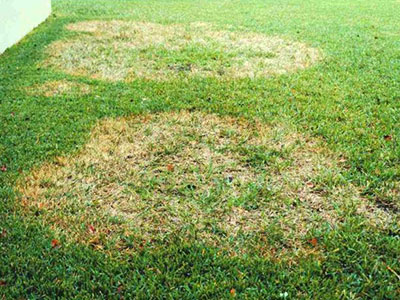 St. Augustine is the turf of choice for Central Florida lawns. You might notice a color change in the late summer and early fall that could cause alarm.
St. Augustine is the turf of choice for Central Florida lawns. You might notice a color change in the late summer and early fall that could cause alarm.
This common lawn fungus is easy to identify, as it creates circular pockets of grass that appear to have died. We’re talking about Brown Patch.
All warm-season turfs are at risk for Brown Patch, especially Zoysia and St. Augustine grass. The disease pathogen, Rhizoctonia solani, will most likely spread from September through May when temperatures are below 80 degrees. It is usually not observed in summer months, but summer weather can lead to over-irrigation, which can lead to fungus. Florida gets excessive rain and high humidity, which can also over-saturate turf grass and lead to infection.
Symptoms:
If an area of your lawn has poor drainage and lacks sufficient sunlight, it may be prone to getting the disease. You’ll notice a soft, dark rot at the base of the leaf and you will easily be able to pull the grass blade off the stem. The most noticeable aspect of the disease, the patches, start as small yellow circles that then turn reddish brown or straw-colored as the leaves start to die. Patches can expand to several feet in diameter. It is common to see yellow or brown turf rings in the center. Grass at the outer margin of a patch may appear darker and wilted.
Treatment of Lawn Disease:
Fungicides can put the disease to rest for 28 days, but there are no permanent treatments.
ABC recommends 2-3 treatments every 28 days starting in September. Our lawn specialists treat preventatively and curatively to safeguard your lawn from diseases like Brown Patch.